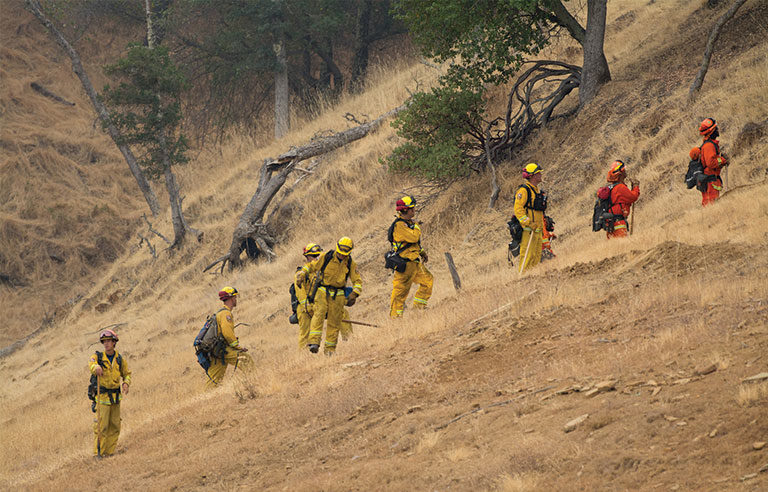NFPA report examines firefighter preparedness for wildfires

Photo: fusaromike/iStockphoto
Quincy, MA – A new report from the National Fire Protection Association highlights several areas of improvement for fire departments to become better prepared to control wildfires.
After interviewing numerous fire officials who had experienced wildfires in the past five years, NFPA identified various barriers to training on fires involving wildland and the wildland/urban interface, which the International Association of Fire Chiefs defines as “areas where homes are built near or among lands prone to wildland fire.” The barriers are:
- Budgetary constraints that limit access to the latest tools specific to wildland/urban interface training and personal protective equipment
- The need to transition from traditional training practices that emphasize structural fire training
- The fact that career firefighters tend to receive wildland training more often than volunteer firefighters
- Inconsistent adoption of wildland and wildland/urban interface training, including local and regional variations in training level and adequacy
- Firefighter fitness levels that may not always be adequate for the rigors of wildland events
- Occasional culture issues, particularly among urban fire departments, in which personnel downplay wildfire threat and risk-reduction issues
According to the report, 97 percent of participants said public education has a positive effect on wildfire mitigation and risk reduction. Many departments promote in-person meetings between fire personnel and residents, businesses and political leaders.
However, many departments also face challenges to their mitigation efforts in the form of financial constraints, low political support and department resistance.
“Ultimately, local fire departments must find ways to address the threat of wildland fires within their particular physical, political and cultural environments,” the report states. “We hope the experiences, challenges, and successes of these departments will help others to navigate the complex tasks of mitigating and responding to fires in the wildland-urban interface.”
The report, the final phase of a two-part study, was published online in January. The first phase was published in November 2015.
Post a comment to this article
Safety+Health welcomes comments that promote respectful dialogue. Please stay on topic. Comments that contain personal attacks, profanity or abusive language – or those aggressively promoting products or services – will be removed. We reserve the right to determine which comments violate our comment policy. (Anonymous comments are welcome; merely skip the “name” field in the comment box. An email address is required but will not be included with your comment.)

